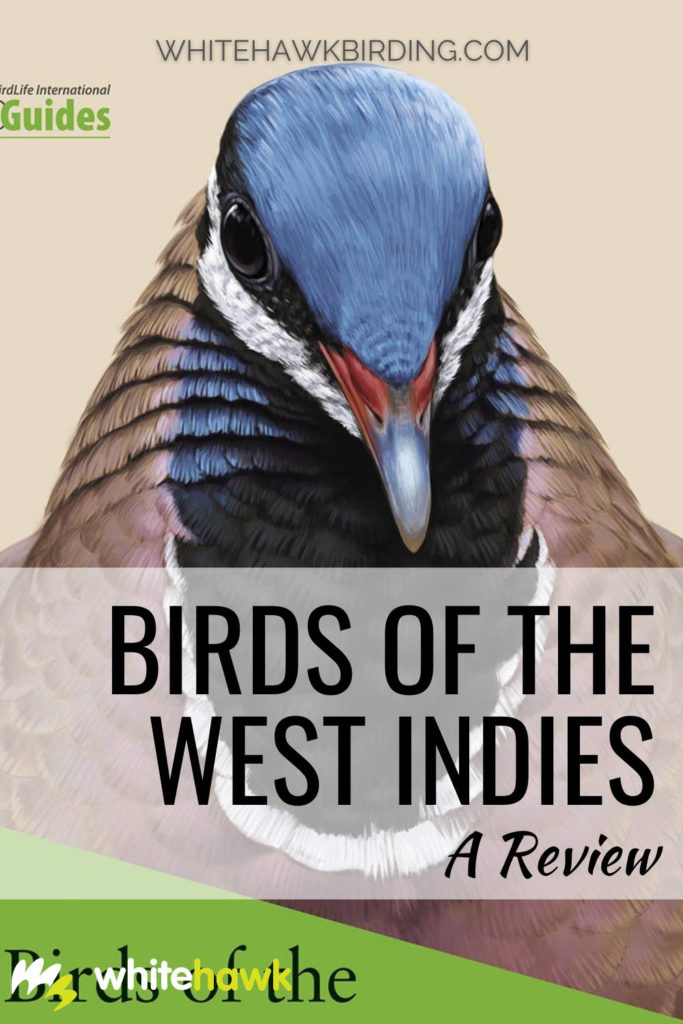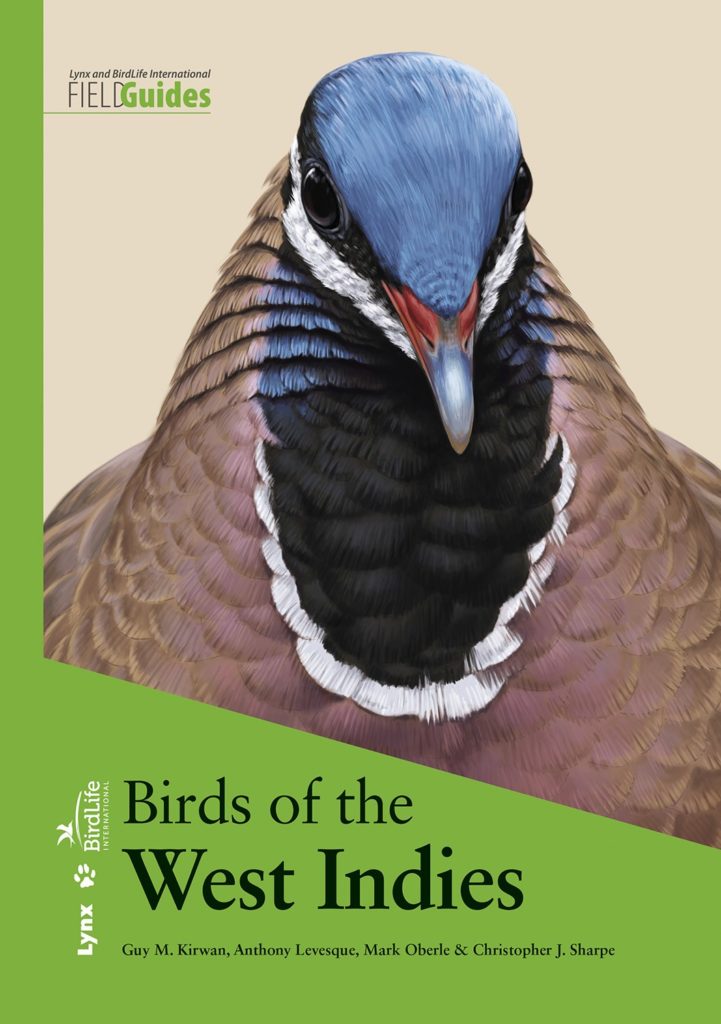
The Caribbean has always been a source of fascination. Some might imagine it as the last pirate’s paradise. Others picture white sand beaches, palm trees overflowing with coconuts, turquoise waters and lush vegetation. We also associate the islands touched by this sea with the rediscovery of the New World. And, unfortunately, its exploitation and submission by the dominant European empires. The Spanish dubbed these islands the West Indies. Therefore, the Birds of the West Indies deals with bird species registered in the region. This includes the Caribbean archipelagos: the Greater Antilles, the Lesser Antilles and Bahamas. In total, 115 islands and 29 countries.
Existing Field Guides
The West Indies have a considerable ornithological bibliographic legacy. One need go no further than the first edition of Birds of The West Indies. James Bond (the ornithologist after which Ian Fleming’s famous fictional spy is named) wrote this guide in 1936. Later versions of this guide are still available and it is still possible to get some of its latest editions. There are also a large number of more contemporary guides. Of these, we should mention ‘Birds of the West Indies’ by Raffaele’s, Wiley et al. This is probably the most popular guide in recent times. We can also recommend the one by Norman Arlott, which has good illustrations.
There are also other guides of interest written for specific countries. For Cuba there is ‘Field Guides to the Birds of Cuba’ by Rolando Garrido and Arturo Kirkconnell, and ‘Endemic Birds of Cuba’ by Nils Navarro. For a visit to Hispaniola, there is ‘Birds of the Dominican Republic and Haiti’ by Steven Latta, Christopher Rimmer et al. There are also several photographic guides and various books on where to find birds in the different Caribbean islands. This region clearly has a wide bibliographic coverage for anyone who is going to visit it.
Thus, we find that the region has a good number of options to choose from. So is a new guide necessary? While it is true that there are a good number of identification guides for the region, it is also true they could use updating. The appearance of a modern guide is always welcome. Especially since this guide seems to have been designed by the authors with one objective in mind: to become the identification guide of Caribbean birds.
The four authors of this guide from Lynx Edicions – Kirwan, Levesque, Oberle and Sharpe – have a lot of experience in the region. They are all authorized voices on Caribbean ornithology or extensive connoisseurs of it through multiple trips. They are joined by a plethora of illustrators. Some have previously contributed illustrations to the Handbook of the Birds of the World, which were used in this book, as well. Others created illustrations especially for this work.
General Overview of Birds of the West Indies
The book is available in two different versions: a flexible cover and a hard cover. I have been using the flexible cover edition. It is the best option for traveling, especially to humid and coastal places in the tropics. The book is quite large. It is 400 pages and measures 16 × 23 cm. Suffice it to say, it occupies plenty of space in our backpacks. This is especially notable if we compare it with the guides that preceded it. But it is a large book for a reason. It includes a large number of subspecies and splits, some relatively recently described for the region. It also contains detailed information corresponding to each species, with the updated status and relevant observations.
The guide is structured in the typical manner of a field guide. The introduction briefly reviews some of the recurring themes of identification guides, such as geographical coverage, climate, ecosystems, conservation, including a list of species with a higher degree of threat, and best areas for birding. Then follows with the bulk of the guide being the species account and identification plates. The guide covers 712 species, of which 190 are endemic and 550 are regular in the region. The taxonomy follows the HBW and BirdLife International Illustrated Checklist taxonomy, and includes the latest updates that have already been registered by BirdLife International and HBW Alive.
Species Treatment
In the text dedicated to each species, the authors give prevalence to the subspecies present in the region. They differentiate these in the species maps. In some cases, they included illustrations dedicated to each subspecies. Additionally, many subspecies have taxonomic notes with even more information provided.
As in other recent guides edited by Lynx, the authors added QR codes to each species’ section. These link with the corresponding pages in the Internet Bird Collection. They show its gallery of photos, audio and video. It is not something that I consider especially useful, but it is possible that many take advantage of this functionality.
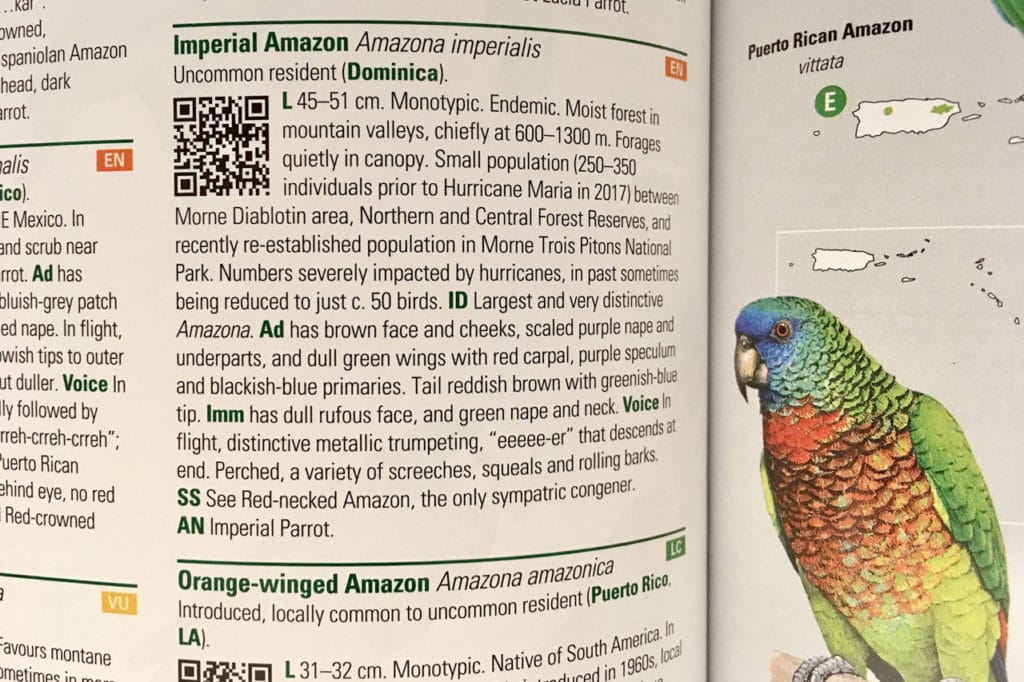
The authors completely updated the status of each species. It is clear they made a great effort to work through the collection of scattered citations. The texts referring to the identification by age and sex, as well as geographical variations, vocalizations and similar species, are quite complete. This is, in my opinion, the main strength of this guide and in which it stands out with respect to the rest.
We noted that the authors included of all the rare birds confirmed in the region with the same level of relevance as many common and regular species. Occasionally occupying the same or more space in the book, even though they have one or two observations in the region. For example, it is very unlikely to find a European bee-eater in the Caribbean and, however, there are two illustrations that occupy a third of a page. The high number of species results in a greater number of pages and book size, which can reduce its practicality as a field guide.
Abundant and excellent illustrations
Illustrations are one of the key features of identification guides. They are the first thing we are probably going to look at. Many of them were produced for the HBW series and are mostly of good or great quality. Hilary Burn and Ian Lewington, and other prestigious illustrators, contributed to this project. However, with a total of 29 different illustrators contributing, it is normal for the quality and style of the illustrations to be variable. In many cases the illustrations on the same plate do not appear to be scaled. Meanwhile, he dimensions of the illustrations on different pages appear unbalanced. In addition, some illustrations, particularly those that show differences between ages and sex in some species, are missing. However, as already mentioned, many species receive several illustrations that show the different subspecies, which is valuable.
In spite of everything, as a whole, the quality and detail of the illustrations far exceed the existing guides. One example are the plates for the genus Setophaga. Until now, we had to consult North American guides to help us identify complicated individuals in the field. Not anymore, thanks to this guide.
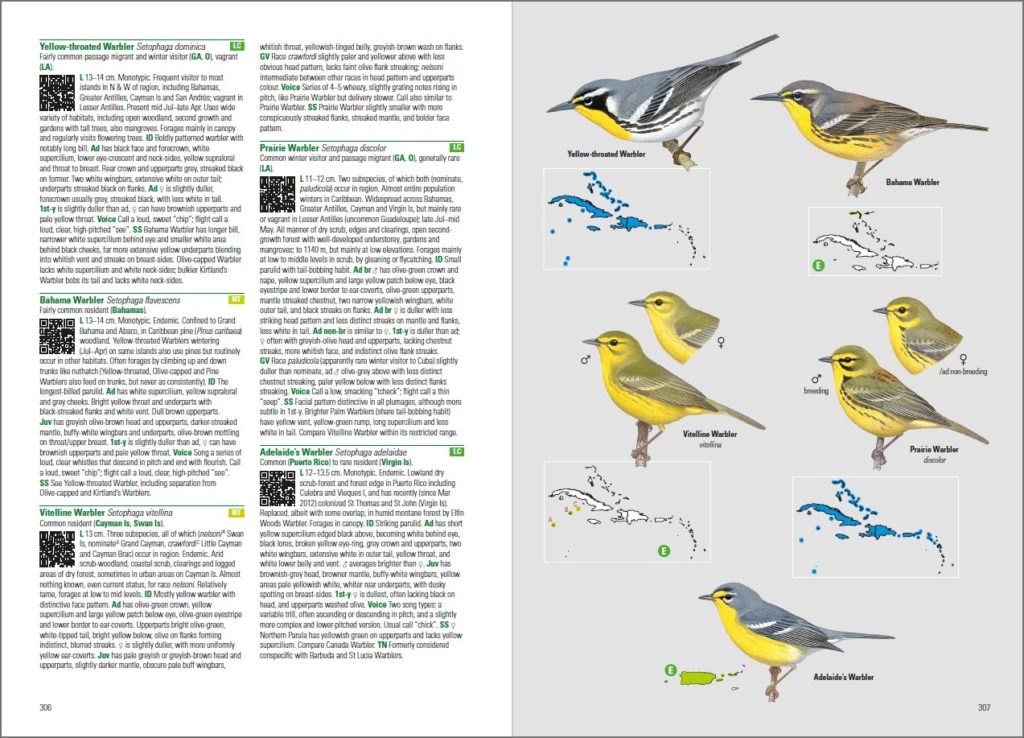
Additional Features and Appendices
Finally, each copy of the book includes a card. With it, you can download a PDF checklist that follows the taxonomy of the book. This can be useful to print and complete in the field.
The species distribution maps are on the same pages as the illustrations, instead of on the main text pages. This may seem un-intuitive at first and sometimes makes the separation of different species more confusing. On a positive note, the authors updated the maps. The maps have enough detail to show the distribution of each species. They also highlight well each species’ different geographical variations.
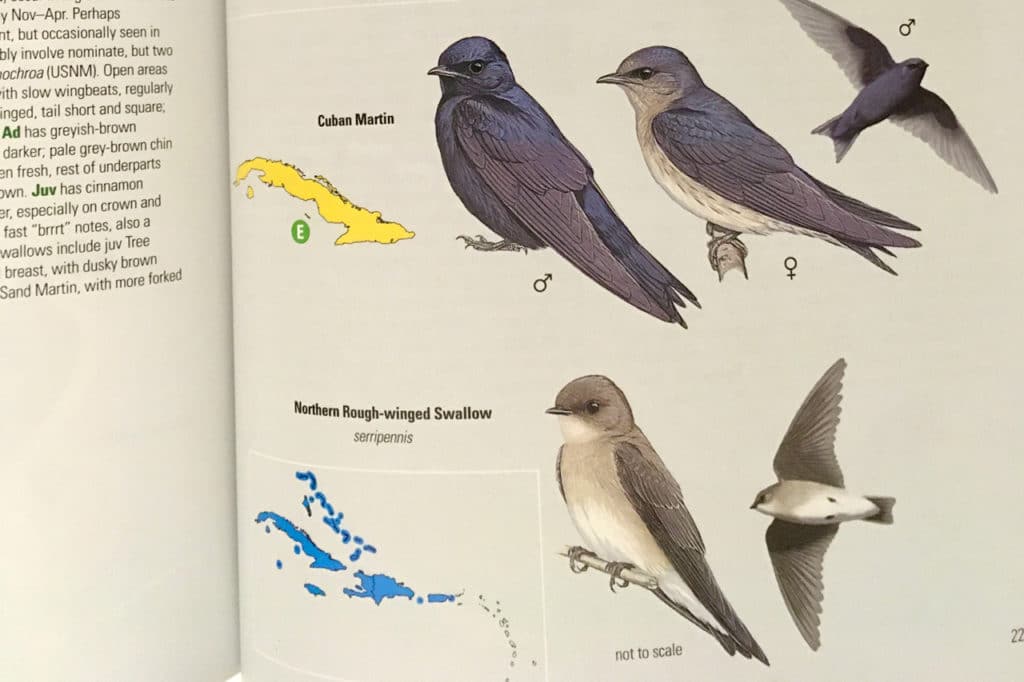
After the treatment of the species, a checklist of the region follows. This covers the status of each species in each country/territory. A second appendix continues with vagrant species of introduced populations, as well as probable but unconfirmed ones. It includes bibliographic references, and an index by English and scientific name. It also features a quick index and a general map of the region with places of interest for bird watching.
Review Wrap-up
We can safely say that “Birds of the West Indies” by Kirwan et al. has become the reference guide for the region. It could use some improvements. The illustrations, structure, and the decision to contemplate vagrants in the main body of the book, for example. However, the complete and updated information and the great quality of most of the illustrations make this book the best option for anyone visiting the Caribbean. I’m really looking forward to using it during our next Whitehawk tour to the region!

